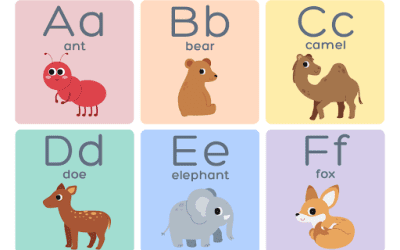While next-generation assessments have exposed content writers to new ways of asking students to demonstrate proficiency of standards, many are still unaware of the plethora of technology enhanced item (TEI) types available. It is important that curriculum and item writers alike be familiar with the features that each TEI type has to offer. Here are six novel TEI types that provide invaluable assessment data and increase student interaction; please note that the item names may vary depending on the authoring platform used.
1) Hot Text
Sometimes referred to as “text selection,” this item type requires students to physically select text from a given passage. You can decide whether or not you’d like students to be able to select entire sentences or individual words. For example, students can identify a particular phrase or sentence as a means of citing textual evidence to support an author’s claim. Students also have the ability to select multiple words or phrases if needed. Although this type of TEI is more commonly used for ELA and Social Studies, math writers may also find this item type useful if they want students to identify or interpret numerical values from a word problem.
2) Plot

This particular TEI is most useful when assessing math standards involving graphing functions or other relationships, but could potentially be used to create representations of data to assess Next Generation Science Standards as well. Whether you’d like students to plot their own points, lines, or figures, Plot TEIs provide an authentic opportunity for student interaction by drawing shapes or graphing functions. Certain authoring platforms even allow students to create and modify their own bar graphs.
3) Classification
Classification items are a subset of Drag-and-Drop TEIs. Although the verb classify is considered a lower-level skill in Bloom’s Taxonomy, item writers can actually use this type of TEI as an opportunity for students to synthesize information, which requires a higher cognitive level. Students can physically sort words, phrases, or images into categories to see relationships and demonstrate how items are related instead of just making written comparisons. For example, a science classification item may ask students to interpret a table and determine whether particular data descriptors are independent variables, dependent variables, or constants.
4) Equation Builder
This type of TEI is mainly used for mathematical assessment items. However, it can also be used to address chemistry or physics standards that ask students to manipulate formulas and equations. Students have the autonomy to describe relationships by creating their own equations rather than selecting from pre-existing options in a multiple-choice item. Responses may include numbers, variables, expressions, and/or equations.
5) Ordering

The task of ordering truly represents the type of student interactivity that technology-enhanced assessment items are designed to provide. As with Classification TEIs, this item type uses the drag-and-drop feature to allow students to rearrange sentences, paragraphs, and even graphics. This TEI is perfect for questions that require students to sequence events, whether it be describing how the events in a story’s plot unfold or arranging events of the American Revolution in chronological order.
6) Matching
This TEI allows students to showcase their ability to associate different pieces of information, similar to matching items on traditional assessments. However, unlike traditional matching items, the technology-enhanced version can integrate visuals as well, allowing students to pair images, text, or numbers from one column with information in another column. For example, students can match terms to pictures of quadrilaterals or vocabulary words to their antonyms.
These six item types are just a small sample of the options that writers have when authoring TEIs. What other types of TEIs are you excited about?




